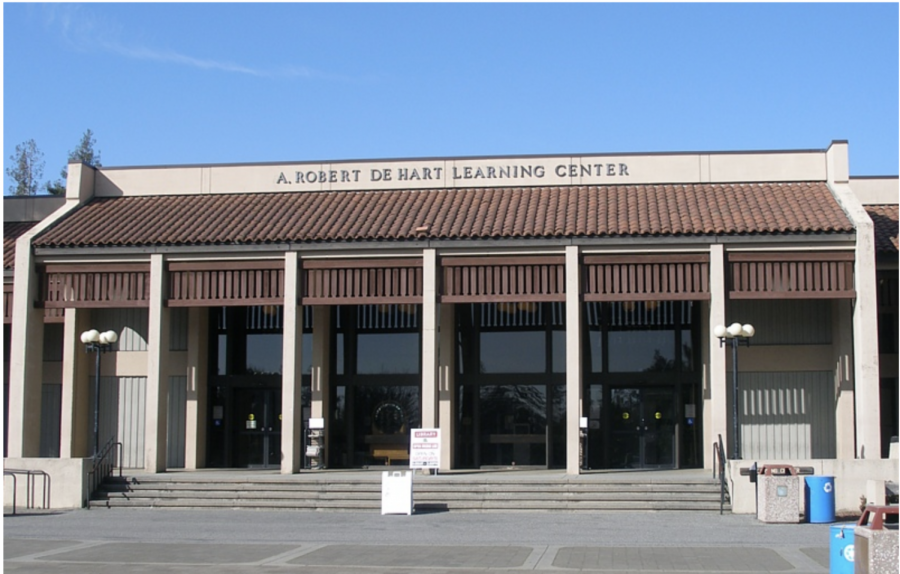The case for a non-traditional college path
Robert D. Hart Learning Center at De Anza College in Cupertino, CA
Why seniors should consider alternative paths to higher education
On June 3, close to 600 MVHS students will graduate and begin a new chapter in their lives. The daunting transition to adulthood often starts with higher education, which, for many students, takes place at a four-year university. Though four-year universities can sometimes uniquely cater to certain students’ needs, they should not be the default plan for higher education. Four-year universities are often expensive, rigid, stressful and may not provide the necessary skills for adulthood and the fast-growing job market. As a result, our seniors should consider the boundless opportunities and different paths before making a final decision.
Community College
Community colleges are often stereotyped as places for students who have been rejected from four-year universities and are diminished to easier, high school level classes that are taught by ill-qualified professors. These stereotypes, however, could not be further from reality. In fact, according to the National Center for Education Statistics, 33% of all undergraduate students attend community colleges. Additionally, community colleges almost always require graduate degrees for professors and faculty, who teach college-level courses. Attending a local two-year school, however, like De Anza College or Foothill College has many advantages, from cost efficiency to smaller classes.
The prices of higher education, according to CNBC, continue to steadily rise every year. This prevents many students, including disproportionate numbers of low-income and middle-income students, from receiving a high-quality education that prepares them for the 21st Century job market. Therefore, for many students, community college is the most affordable option. The average student loan debt per graduate is $32,000 and the average entry-level salary in California is also $32,000. These debts often follow students for decades to come, especially those who attend private universities. New York University, charges students a whopping $62,000 per year (and that’s if you live on campus). In contrast, attending a local two-year college is much cheaper, with in-state community college tuition being around $1,310 or even tuition-free in California (however plans to make it free nationwide are underway).
Not only are community colleges more affordable, but they also provide more flexibility, as students typically don’t live on campus which is significant because room and board can be just as expensive as tuition. Additionally, two-year colleges typically have diverse student bodies, which include everyone from teenagers to older adults looking to gain new skills. This diversity that permeates age groups, majors, and goals allows students to partake in a plethora of classes that fit their unique objectives.
Community college students also have the opportunity to transfer to a four-year university after two to six years Schools such as De Anza College have a 79% transfer acceptance rate to University of California (UC) schools. In addition, some have a “Transfer Admission Guarantee” program or T.A.G., that gives guaranteed admission to a UC school of choice. This helps ensure students can receive a bachelor’s degree at a high-ranking university at half the price.
For seniors, attending a community college might be a smart decision to consider. Community colleges face unnecessary and toxic stereotypes, which often deter many students for which such an education would be a much better fit for their personal goals. However, local two-year colleges are more affordable and flexible than a typical four-year university and can enhance the college experience for those seeking higher education.
Vocational Schools
Also called trade schools, vocational schools are another form of higher education in which students learn technical skills that prepare them for a specific job. Students can choose to attend vocational schools that prepare them for careers including electricians, paralegals, nurse assistants, cosmetologists, and more. These schools have over 16 million students across the country. However, vocational schools face a similar stigma as community colleges but can be very beneficial depending on the student, their situation, and their goals.
Higher education is an avenue many employ to reach an end goal of financial stability, but it often has the opposite effect, due to astronomical tuition and limited high-paying job opportunities. This is why many choose to attend trade schools. These schools, similar to community colleges, are very affordable and focus solely on the necessary skills for a long-lasting career. On average, vocational schools cost $5,000 to $15,000, making them much more accessible for students of all income levels.
Vocational programs are unique in that they range from a few months to two years. This condensed education is beneficial because, rather than studying general education subjects that do not relate to the career a student might be aiming for, a person only attends the absolute necessary classes that relate to their intended career.
Compared to a typical path to higher education, vocational schools can be much more promising and fruitful, depending on a student and their goals. Similar to community colleges, they are affordable, directly provide students with the skills needed for their career, take half the time of four-year universities, and will allow you to make big bucks.
Bootcamp
Bootcamps, in terms of higher education, are fast-paced courses that provide you with technical certifications, usually in careers like computer science and design. Bootcamps, such as Flatiron School and the University of Silicon Valley, are newer to the higher education scene but have grown in recent years, particularly due to the fast-growing demand for tech workers.
These schools, similar to vocational schools, provide the necessary skills for a specific profession.
Bootcamps usually range from a few weeks to a year and are around $13,350. Some Bootcamps, like Flatiron school, allow students to take part in an income share agreement. With an income share agreement, students pay a percentage of their income back after they get a job. Technology companies such as Tesla and Apple are also no longer requiring college graduation for many jobs, which only incentivizes participating in a Bootcamp.
Overall educational boot camps provide students with the necessary skills to find a job in a fast-growing market at the fraction of the time and price of a four-year university, with it truly being higher education of the future.
Not attending college
Colleges are, for many people, the tool needed to start a life of stability, success and satisfaction. However, college is not one size fits all. In fact, the U.S. has a 40% college dropout rate. For this reason, not going to college should be a consideration for some. For students who still need time to explore their interests, those who may be preoccupied with an already stable career or even students who may not be academically prepared, not going down a path of any higher education might be the best option (whether temporary or not).





